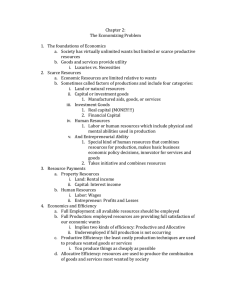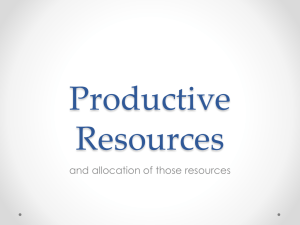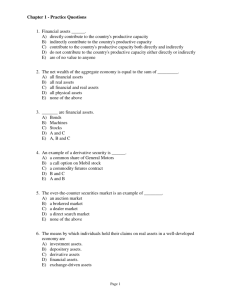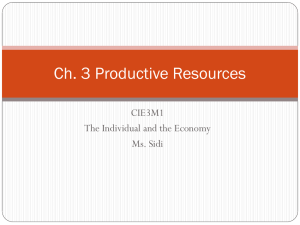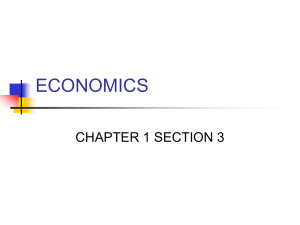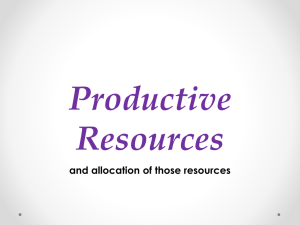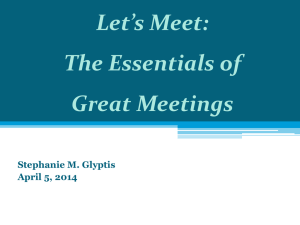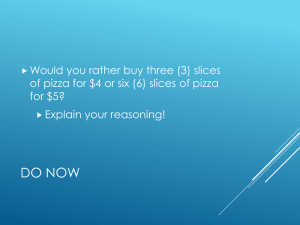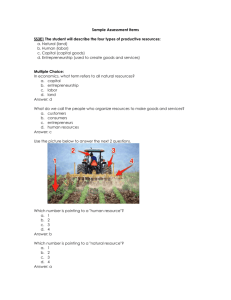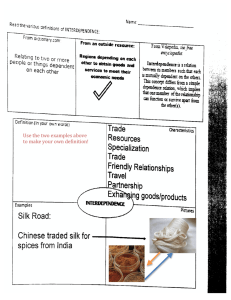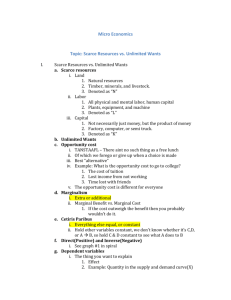Chapter 1 Test A - Gilbert Public Schools
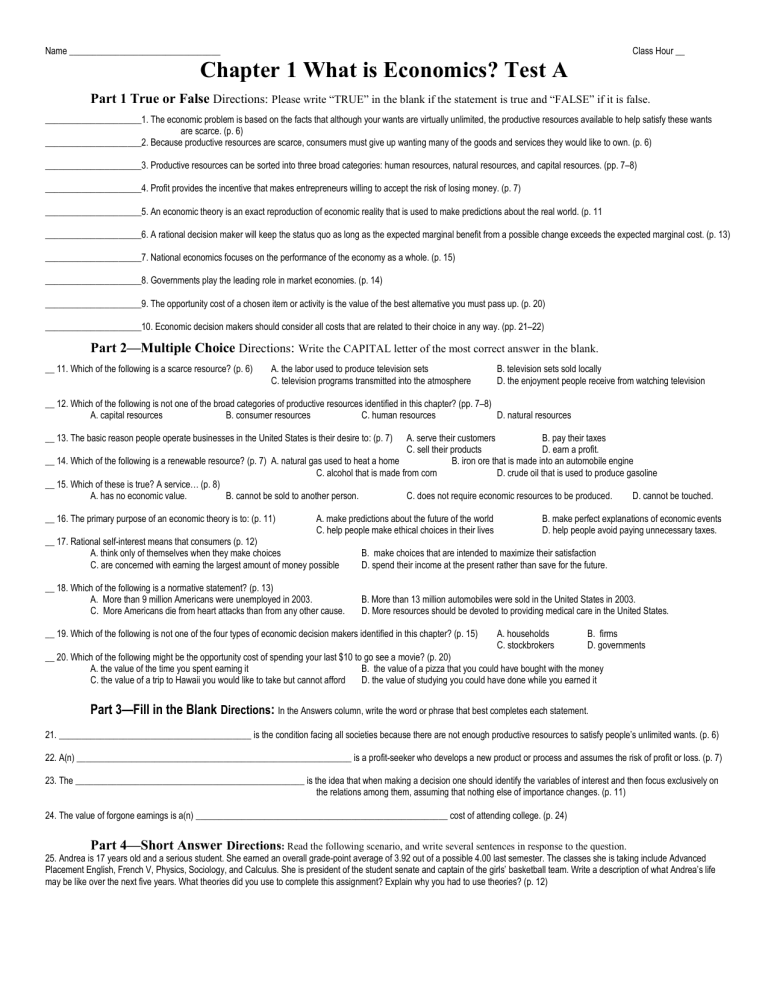
Name _________________________________
Chapter 1 What is Economics? Test A
Class Hour __
Part 1 True or False Directions: Please write “TRUE” in the blank if the statement is true and “FALSE” if it is false.
_____________________1. The economic problem is based on the facts that although your wants are virtually unlimited, the productive resources available to help satisfy these wants are scarce. (p. 6)
_____________________2. Because productive resources are scarce, consumers must give up wanting many of the goods and services they would like to own. (p. 6)
_____________________3. Productive resources can be sorted into three broad categories: human resources, natural resources, and capital resources. (pp. 7–8)
_____________________4. Profit provides the incentive that makes entrepreneurs willing to accept the risk of losing money. (p. 7)
_____________________5. An economic theory is an exact reproduction of economic reality that is used to make predictions about the real world. (p. 11
_____________________6. A rational decision maker will keep the status quo as long as the expected marginal benefit from a possible change exceeds the expected marginal cost. (p. 13)
_____________________7. National economics focuses on the performance of the economy as a whole. (p. 15)
_____________________8. Governments play the leading role in market economies. (p. 14)
_____________________9. The opportunity cost of a chosen item or activity is the value of the best alternative you must pass up. (p. 20)
_____________________10. Economic decision makers should consider all costs that are related to their choice in any way. (pp. 21–22)
Part 2—Multiple Choice Directions
:
Write the CAPITAL letter of the most correct answer in the blank.
__ 11. Which of the following is a scarce resource? (p. 6) A. the labor used to produce television sets
C. television programs transmitted into the atmosphere
__ 12. Which of the following is not one of the broad categories of productive resources identified in this chapter? (pp. 7–8)
B. consumer resources C. human resources A. capital resources
__ 13. The basic reason people operate businesses in the United States is their desire to: (p. 7) A. serve their customers
C. sell their products
B. television sets sold locally
D. the enjoyment people receive from watching television
D. natural resources
B. pay their taxes
D. earn a profit.
__ 14. Which of the following is a renewable resource? (p. 7) A. natural gas used to heat a home
C. alcohol that is made from corn
B. iron ore that is made into an automobile engine
D. crude oil that is used to produce gasoline
__ 15. Which of these is true? A service… (p. 8)
A. has no economic value. B. cannot be sold to another person.
__ 16. The primary purpose of an economic theory is to: (p. 11)
C. does not require economic resources to be produced.
A. make predictions about the future of the world
C. help people make ethical choices in their lives
D. cannot be touched.
B. make perfect explanations of economic events
D. help people avoid paying unnecessary taxes.
__ 17. Rational self-interest means that consumers (p. 12)
A. think only of themselves when they make choices B. make choices that are intended to maximize their satisfaction
C. are concerned with earning the largest amount of money possible D. spend their income at the present rather than save for the future.
__ 18. Which of the following is a normative statement? (p. 13)
A. More than 9 million Americans were unemployed in 2003. B. More than 13 million automobiles were sold in the United States in 2003.
C. More Americans die from heart attacks than from any other cause. D. More resources should be devoted to providing medical care in the United States.
__ 19. Which of the following is not one of the four types of economic decision makers identified in this chapter? (p. 15) A. households
C. stockbrokers
B. firms
D. governments
__ 20. Which of the following might be the opportunity cost of spending your last $10 to go see a movie? (p. 20)
A. the value of the time you spent earning it B. the value of a pizza that you could have bought with the money
C. the value of a trip to Hawaii you would like to take but cannot afford D. the value of studying you could have done while you earned it
Part 3—Fill in the Blank Directions :
In the Answers column, write the word or phrase that best completes each statement.
21. __________________________________________ is the condition facing all societies because there are not enough productive resources to satisfy people’s unlimited wants. (p. 6)
22. A(n) ____________________________________________________________ is a profit-seeker who develops a new product or process and assumes the risk of profit or loss. (p. 7)
23. The __________________________________________________ is the idea that when making a decision one should identify the variables of interest and then focus exclusively on the relations among them, assuming that nothing else of importance changes. (p. 11)
24. The value of forgone earnings is a(n) _______________________________________________________ cost of attending college. (p. 24)
Part 4—Short Answer Directions
: Read the following scenario, and write several sentences in response to the question.
25. Andrea is 17 years old and a serious student. She earned an overall grade-point average of 3.92 out of a possible 4.00 last semester. The classes she is taking include Advanced
Placement English, French V, Physics, Sociology, and Calculus. She is president of the student senate and captain of the girls’ basketball team. Write a description of what Andrea’s life may be like over the next five years. What theories did you use to complete this assignment? Explain why you had to use theories? (p. 12)

